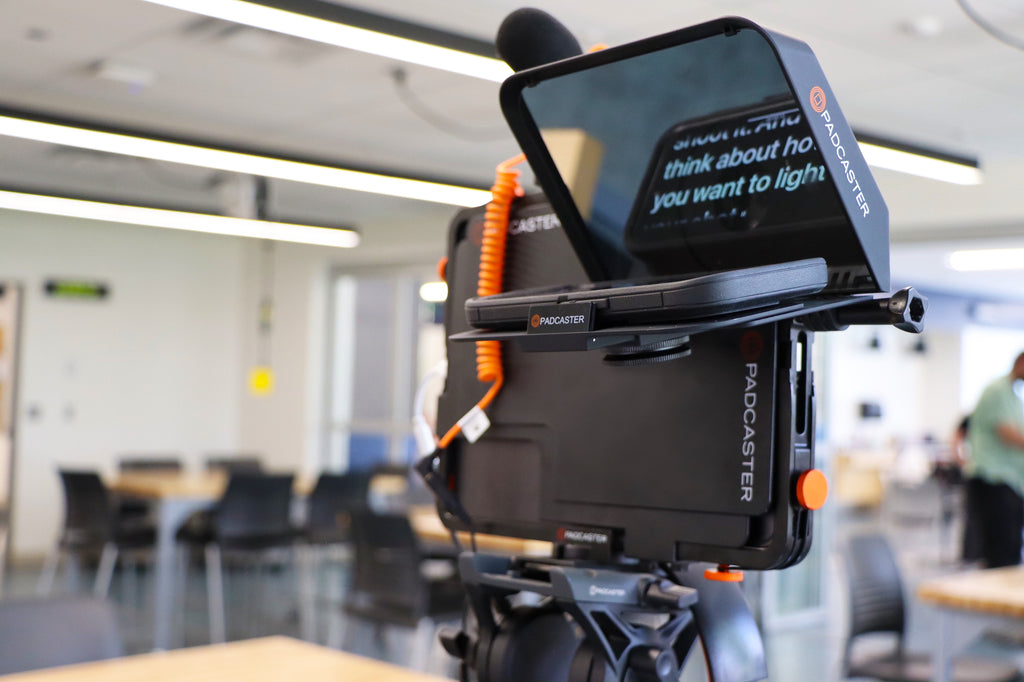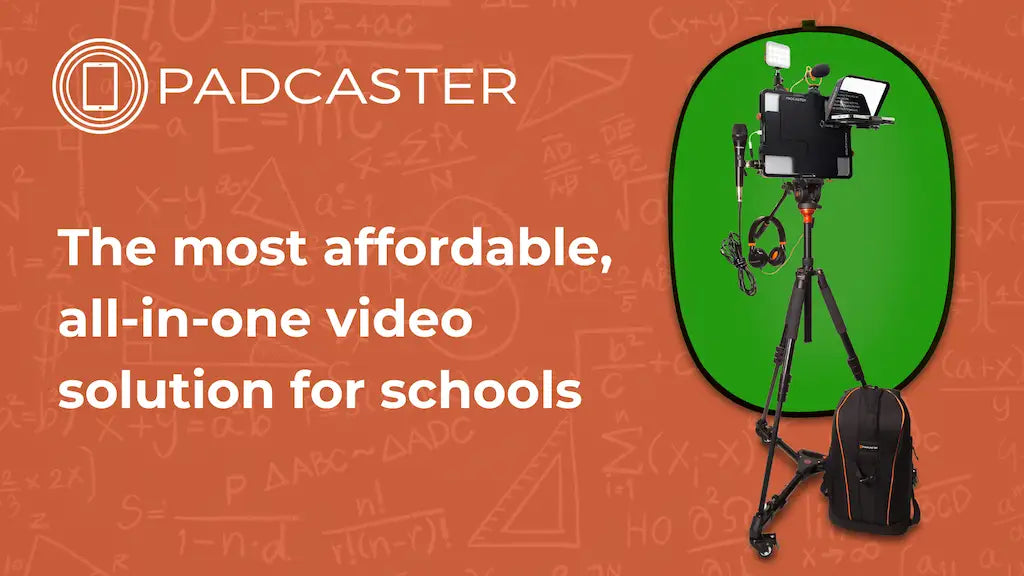
So, you want to learn how to live stream videos or how to improve live streaming. We assume this means you’re a content creator who wants to broadcast live and recorded videos to a broad audience, yes? In this post, we’ll cover how you can use existing smart devices to create high-quality videos that you can share, stream and publish virtually anywhere.
Thanks to advances in technology, you don't need expensive video and audio equipment merely to create or broadcast videos. Livestreaming and crafting high-quality footage with smartphones and tablets is easy and more than do-able today. In fact, vloggers favor recording with mobile devices, as evidenced by the millions of videos across social media and other video platforms.
Whether you're a mobile journalist (mojo) looking to livestream with an iPad the latest happenings in your area, a teacher with a smartphone who wants to broadcast a how-to for a new classroom project, or you're in charge of sharing live church services to worshippers at home, you'll need first to determine which streaming platform you want to use. You have a few options such as social media (think Facebook, Twitter, and Instagram), Twitch, YouTube, and other online video platforms (hosting services).
What if you need to reach an audience in various locations? You may want to consider streaming from multiple platforms. However, for your first few livestreams, it's best to stick with a single platform so you can practice and minimize the chances of technical errors.
Now, we need to determine how much bandwidth your livestreaming will require. Let's get started.
How Much Bandwidth for Livestreaming?
Many factors go into how much bandwidth you need to livestream video. It's important to remember that livestreaming requires two types of data transfers, uploads and downloads. The speed at which these transfers occur will play a large role in how your livestream appears to your viewers. This speed is measured by bitrate (the amount of video data transferred in a period such as Mbps, which stands for megabits-per-second).
If your bitrate is too slow, it can result in poor video quality or a crazy amount of buffering, regardless of the device used. The typical suspect is low bandwidth (the amount of data transmitted over a path, in this case, your internet connection). While you can't control the bandwidth of your viewers' internet connection, you can do something about yours.
For high definition (1080p), aim for a minimum of 4 Mbps upload bandwidth speed from your internet service; for lower resolution, such as 720p video feed, look for 2-6 Mbps. Because your internet speed can fluctuate, you should tack on an additional 35% to 40% buffer to your upload bitrate. You can quickly test your speed for free with SpeedTest.net.
Best Microphones for Streaming
Although smartphones and tablets have built-in mics, they don't provide excellent quality audio, especially if there is distance between you and your device. We recommend using an external mic. Here's what you need to look for in a microphone.
A cardioid stick microphone or unidirectional mic is ideal for livestreaming because it picks up sound from the front and ignores unwanted surrounding noises (like your kids running around). If you plan on interviewing guests on your livestream, you may want a bidirectional microphone that can catch sounds from the front and back of the microphone. On the other hand, any time you want a hands-free mic and the ability to move around a bit, a lavalier microphone that clips onto your clothing is best.
Of course, any time you livestream outdoors, you introduce noises like wind, traffic, and barking dogs that can interfere with your audio quality. Adding a cardioid microphone like the Padcaster Mini Microphone to your mobile device is simple. With its shock mount and windscreen, this rugged compact mic helps eliminate any handling noise and wind interference.
Must-Have Live Streaming Accessories
Your livestream location and subject play a large role in what accessories you'll need. However, to help you avoid buying a collection of unnecessary equipment for your livestreams, we've put together a list of some must-have accessories:
- An iPhone, iPad, smartphone, or tablet that can produce high-quality footage.
- Tripods and handgrips that reduce or eliminate shakiness from hand-held mobile devices.
- Webcam for easy broadcast from your desktop.
- A teleprompter to help you speak naturally while looking straight into the camera and staying on script.
- A green screen so you can hide and customize your background for a professional look.
- Lighting such as a ring light and adjustable LED lights can ensure excellent live streaming quality.
- Livestreaming software to convert your feed into the correct broadcasting format and mix multi-cam sources into a single professional-looking livestream. Teradek AirMix, OBS Studio, Wirecast, and Dacast are popular broadcasting software solutions.
Tips and Tricks for Livestreaming
While mobile devices and tablets are excellent tools for livestreaming, here are a few tips that'll help you achieve high-quality footage:
- A wired connection (instead of Wi-Fi) to your internet reduces interference and ensures your upload speed's stability. Obviously, this doesn’t work if you’re on the go!
- Limit or remove other devices connected to the internet while you're livestreaming, because their usage can reduce your bandwidth. Again, if you’re using public or someone else’s Wi-Fi, you won’t have control over other users.
- Up-to-date hardware and software ensure your equipment can support streaming live video requirements.
- Remove or block malware or online tracking software because they consume your bandwidth and cause slow upload speeds.
- Always test your equipment before you go live!
Need More Information?
Fill out the form here to get in touch with a member of the Padcaster Team.


